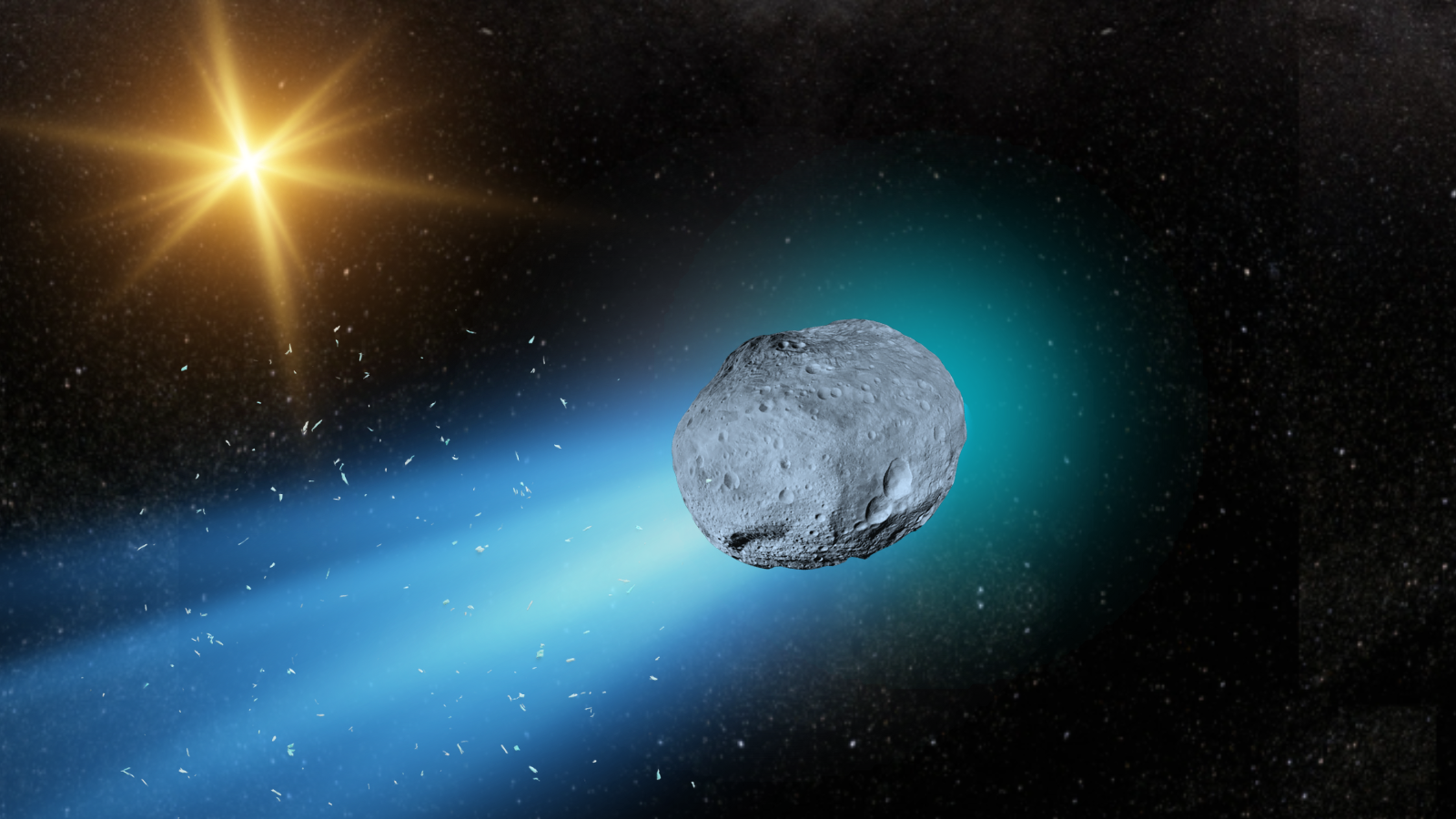In July 2025 the interstellar object 3I/ATLAS (designated C/2025 N1) was discovered by the Asteroid Terrestrial‑impact Last Alert System (ATLAS) survey in Chile. Wikipedia+3NASA Science+3SETI Institute+3 Its orbit is hyperbolic, meaning it is not bound to our Solar System and will simply pass through. NASA Science+1
What makes it especially noteworthy is that it offers a rare opportunity: to study material from another star system without leaving our own. As one article states, “A time-capsule from another world.” SETI Institute
Observations show that 3I/ATLAS is shedding gas and dust (i.e., showing comet-like activity): for example, the nucleus is bounded by an upper size limit of a few kilometres. NASA Science+1 Moreover, spectroscopic and polarimetric studies are revealing surprising features, such as unusually high carbon dioxide content in the coma, suggesting a distinct chemical history. arXiv+1
Thus, 3I/ATLAS is already proving to be more than just a curiosity—it is a scientific bonanza, and also a source of speculation.
SETI, the United Nations and the Search for Technosignatures
The SETI Institute (Search for Extraterrestrial Intelligence) is an organisation dedicated to the search for signals or signs of extraterrestrial technology. Within that context, the arrival of an interstellar object like 3I/ATLAS raises questions: could it be completely natural, or might it hide something more exotic?
On the international stage, the United Nations (UN) provides the framework for global cooperation on space issues, including planetary protection, space object monitoring, and indeed the responsible study of phenomena with potential implications for humanity. While the UN has not made a special mandate for 3I/ATLAS per se, the fact that a foreign object from interstellar space passes through our Solar System underscores the need for coordination: observational data sharing, hazard assessment, and perhaps even protocols for technosignature detection.
In this sense, SETI’s work (including monitoring interstellar objects for anomalous behaviour) and the UN’s overarching global governance framework meet at a crossroads. One theory posits that if an interstellar object exhibited technological signatures (instead of purely natural behaviour), it might trigger mechanisms for international consultation under the UN’s space-policy umbrella. Indeed, some scientists are already exploring whether 3I/ATLAS merits such scrutiny. Medium+1
Thus the interplay between SETI, the UN and objects like 3I/ATLAS creates a fascinating arena—part science, part speculation, part policy.
Theory and Implications: What 3I/ATLAS Could Mean for Humanity
Natural origin vs. technological artifact
Most astronomers interpret 3I/ATLAS as a natural interstellar comet: its hyperbolic trajectory, gas and dust emissions, and chemical signatures align with expectations for a body born in another star system. SETI Institute
However, a minority of researchers (including Avi Loeb) have proposed that some features of 3I/ATLAS are anomalous enough to ask whether it might be a technological artifact—i.e., something engineered rather than purely natural. Medium+1
They highlight aspects such as its trajectory lying close to the ecliptic, the timing of perihelion behind the Sun, and the difficulty of intercepting it with our current technology. Such features, they argue, raise a small but non-zero possibility of intelligence at play. Center for Astrophysics+1
The vast majority of the scientific community remain skeptical of the “alien spacecraft” hypothesis, pointing out that natural explanations are sufficient and simpler. Nonetheless, the debate brings into sharp focus the question: how should we treat objects whose origin is ambiguous?
Why this matters
If 3I/ATLAS is natural, it still provides extraordinary insight into the composition, structure and history of other star systems’ building blocks. For example, the high CO₂ to H₂O ratio seen in its coma may suggest that in its home system it formed in a region much colder or more radiation-exposed than typical Solar-System comets. arXiv
On the other hand, if it were technological (even hypothetically), the implications for humanity would be profound—raising questions about detection, communication, and even policy responses. In that case, institutions like SETI and the UN would have critical roles in observation, verification, and international coordination.
Moreover, even the possibility of something extraordinary prompts us to consider readiness: scientific frameworks, observational capabilities, data sharing, and public communication. Objects like 3I/ATLAS may not only expand our scientific horizons—but also our policy, philosophical, and existential ones.
Closing thoughts
The story of 3I/ATLAS is unfolding in real time. Whether it turns out simply to be a natural interstellar visitor or something far more unusual, it emphasizes the need for international collaboration (via the UN framework), advanced detection and analysis (via SETI and related efforts), and open thinking balanced with rigorous science. It reminds us that the universe sometimes surprises us—and that how humanity responds matters as much as what we discover.




